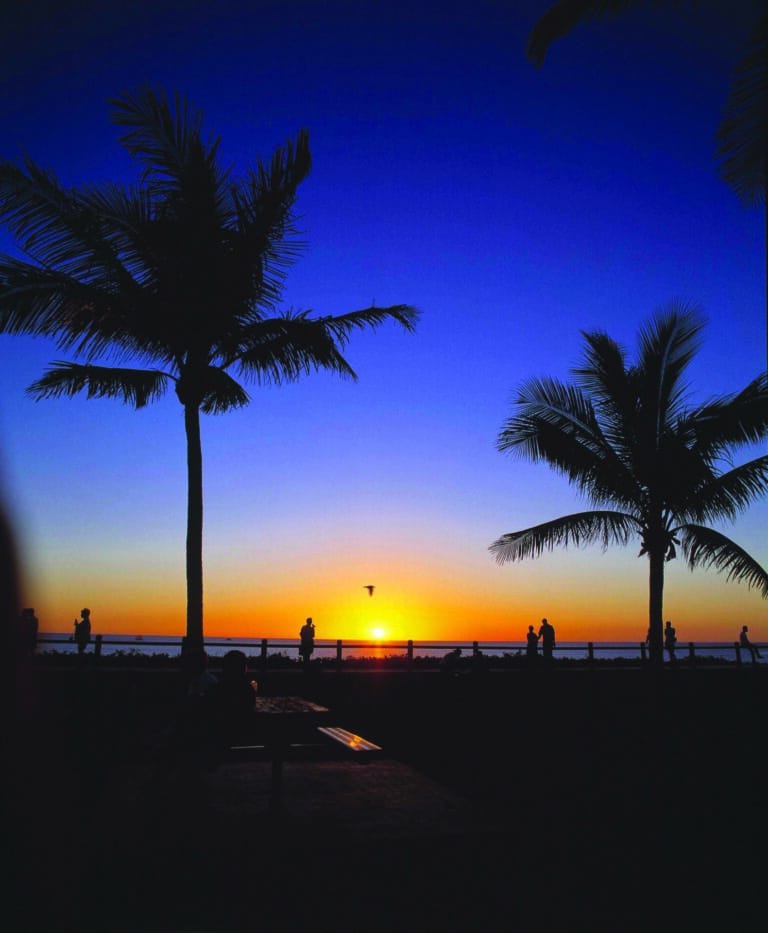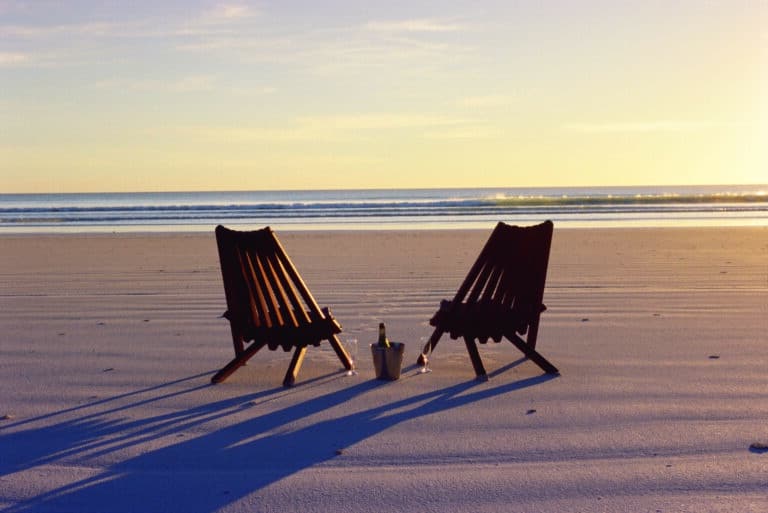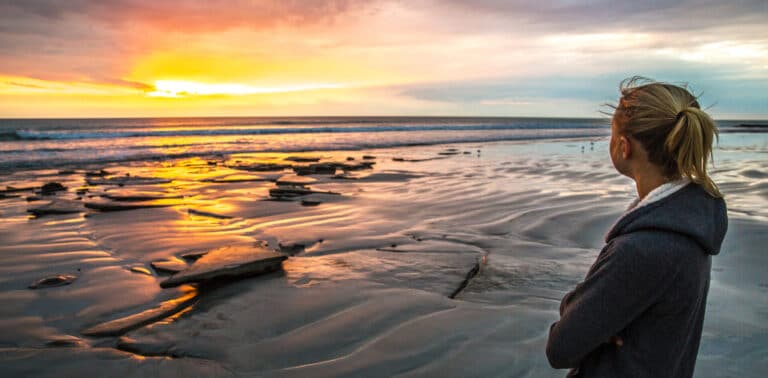Project History
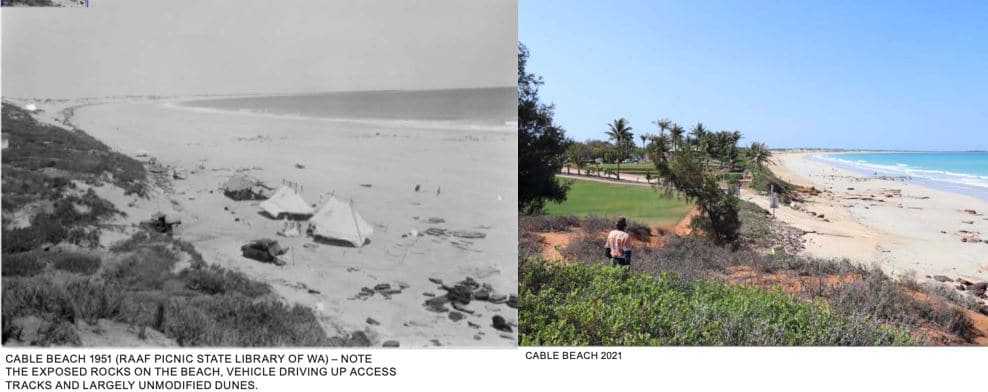
Walmanyjun Cable Beach Development Strategy 2016
Since the late 1990s, the Shire of Broome has recognised the need for coordinated land use planning for the Cable Beach Precinct.
This progressed initially through the formation of the Cable Beach Tourist Node Structure Plan (1998), followed by several strategies and plans.
The most recent is the Walmanyjun Cable Beach Development Strategy (CBDS), which was adopted at the Ordinary Meeting of Council (OMC) held on July 28, 2016.
The CBDS guides future land use and development within the Cable Beach tourist district and includes recommendations for how the Shire and its relevant partners can work together to achieve the objective of the Local Planning Strategy. One of the recommendations identified within the CBDS was for a Foreshore Master Plan to provide a vision for the Walmanyjun Cable Beach Foreshore Reserve at a sufficient level of detail to seek funding for its implementation.
The following ‘Shire of Broome Directions’ were identified within the CBDS, subject to budget and resourcing: Prepare a Foreshore Master Plan for the Cable Beach Foreshore Reserve (Reserve 36477) that explores the concepts outlined in the Concept Plan and provides a detailed basis for undertaking improvements in the public realm.
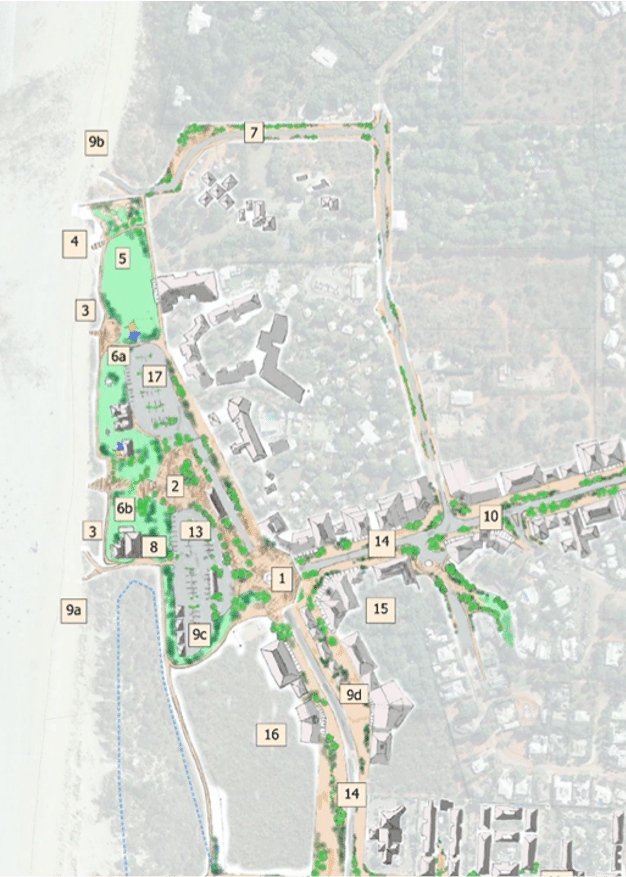
Walmanyjun Cable Beach Foreshore Master Plan 2017
In September 2016, the Shire engaged UDLA to prepare a Master Plan for the Walmanyjun Cable Beach foreshore area and adjacent portions of the Cable Beach Road West Road Reserve.
The Master Plan considers, in greater detail, the concept designs that formed part of the CBDS. It provides a long-term vision for the Walmanyjun/Cable Beach foreshore area and is intended to be used as a tool to facilitate investment in community infrastructure through municipal funds, grants, and public and private partnerships.
Council endorsed the Master Plan at the OMC held on October 17, 2017 following an extensive community consultation process. The document has subsequently won a Planning Institute of Australia commendation award.

Broome Townsite Coastal Hazard Risk Management and Adaptation Plan (CHRMAP) 2017
The Shire of Broome adopted the Coastal Hazard Risk Management and Adaptation Plan (CHRMAP) for Broome townsite on September 17, 2017.
The CHRMAP aims to systematically identify coastal inundation and erosion hazards across the townsite and, in association with the community and stakeholders, establish controls to manage and mitigate the risk.
The first step of this process was to prepare a Coastal Vulnerability Study (CVS) to understand potential future threats from coastal inundation, erosion, stormwater flooding and climate change. The Broome CVS was received by Council in June 2016 and identified that portions of the Broome townsite are at risk of coastal hazards, namely inundation and erosion, within a 100-year planning timeframe.
Since then, the Shire has developed a draft CHRMAP based on the West Australian Planning Commission’s Coastal Hazard Risk Management and Adaptation Planning Guidelines. The Guidelines provide a risk management approach to dealing with the forecasted impacts of coastal hazards in the future.
Two community information forums, held in July 2016, and two community workshops, held in August 2016, informed the development of the CHRMAP. The information forums introduced participants to the CHRMAP process and the work undertaken as part of the CVS.
The workshops allowed participants to identify and prioritise coastal zone assets, assess the consequences of these assets being affected by coastal hazards, and consider various adaptation options for key areas in Broome, including Chinatown, Cable Beach and Town Beach.
The CHRMAP identified an ‘Extreme’ risk rating for the Cable Beach Shoreline, Surf Life Saving Club, and Zanders Café (now Cable Beach House) in 2040.
It concluded that a Protect option should be adopted for Cable Beach's main tourist hub.
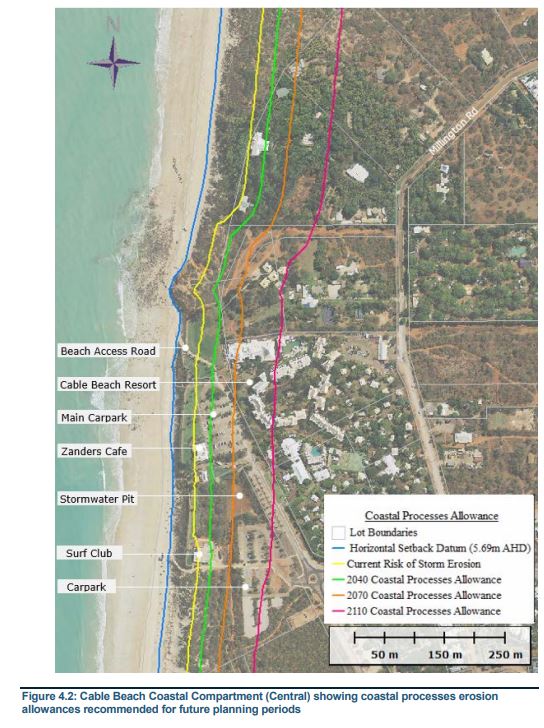
Business Case 2019-2020
EXECUTIVE SUMMARY: The redevelopment of Walmanyjun/Cable Beach Foreshore represents a golden opportunity to expand Broome’s peak season by stimulating commercial and tourism activation and transitioning one of our high-quality natural assets into a global drawcard.
This $36.5 million, shovel-ready infrastructure project will unlock over $10 million in private sector investment and support hundreds of jobs during and post-construction.

Coastal Protection Investigations 2021-2022
As part of the detailed design process, a number of technical investigations have been undertaken to further understand the design considerations required for the protection options at Walmanyjun/Cable Beach.
These investigations include an analysis of a buried rock revetment wall and sand nourishment.
The technical investigations identified ‘sand nourishment’ as the preferred coastal protection approach for the dune system in front of Zanders and the Surf Club.

This approach would result in more natural coastal protection while providing a reasonable risk profile.
The investigations found that an exposed rock revetment would be the most suitable protection in the northern section of the foreshore, where the beach access and drainage outlet are located.
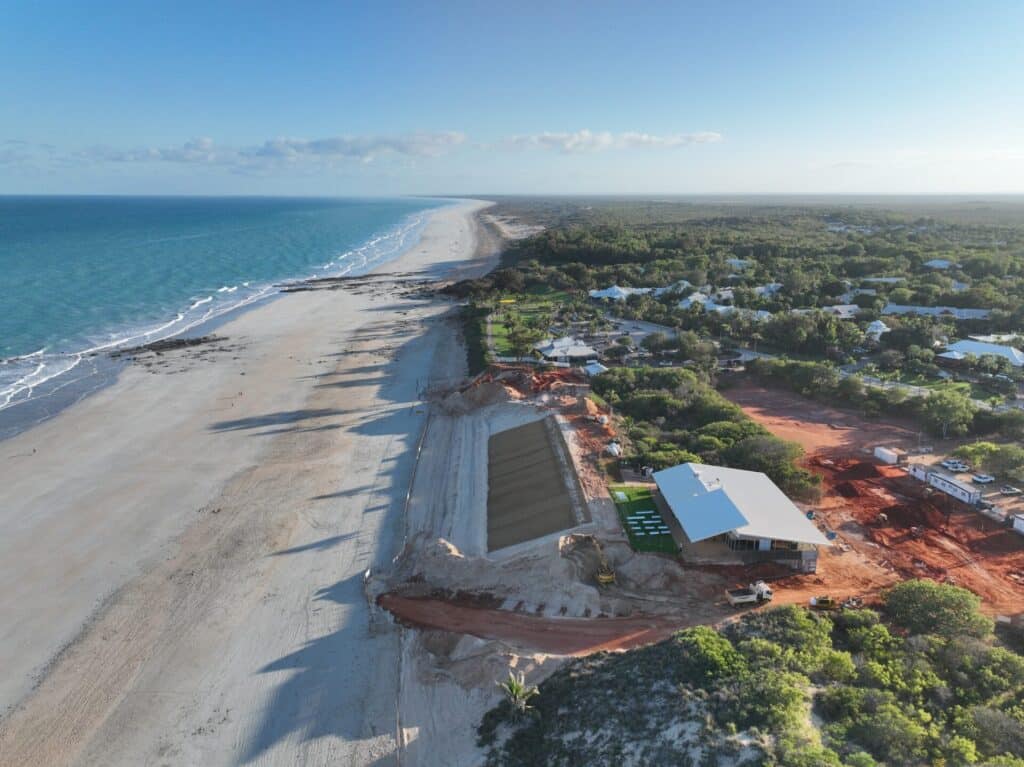
Key factors that influenced this recommendation included data obtained through wave modelling that identified localised wave run-up in the northern amphitheatre section, the presence of existing coastal protection structures (gabions) and the need to provide and protect beach access and drainage structures.
Council endorsed the recommended coastal protection options at the Ordinary Meeting of Council on February 24, 2022.
Detailed Design 2022-2023
The Detailed Design was completed in December 2022, with the final design reported back to the Community and Stakeholder Reference Group. Tender-ready documentation was completed in March 2023.
Click here to read all the project documents and reports.
About Broome
Steeped in history and culture, Broome is an iconic Australian tourist destination, recognised both nationally and internationally, and it is the main regional centre in Western Australia’s far north Kimberley region.
Broome’s tourism economy is nationally significant and supports the wellbeing of hundreds of businesses and thousands of residents. Visitors are estimated to contribute nearly $200 million per annum to Broome’s economy; assisting to provide 3,900 employment opportunities.
Government, community and industry stakeholders recognise that investment is required to achieve a greater conversion from visitor numbers to visitor spend in the district. The proposed redevelopment will increase the productivity of the asset and contribute to increasing Broome’s traded economy by:
- Catalysing commercial investment opportunities in prime adjacent land holdings;
- Improving amenities for more significant events and visitor activation in Broome’s shoulder seasons;
- Protecting the environmental integrity of the natural form; and
- Highlighting cultural connectivity with Yawuru.
The redevelopment of the Walmanyjun/Cable Beach Foreshore is the fundamental next step in the development of Broome’s major precincts following the outstanding success of the Chinatown Revitalisation Stage One and Broome Town Beach projects and has been independently assessed to deliver significant and sustainable economic benefits through:
- The expansion and redevelopment of the wider Cable Beach precinct, with the foreshore upgrades supporting $10m+ private sector investment in new and expanded tourism accommodation and amenities;
- Greater levels of visitation and expenditure, especially through the shoulder seasons of March to May and September to November;
- Activation of the foreshore, particularly year-round and in the day and evening through the introduction of unique water play and recreation spaces;
- Increased visitor capacity as the result of transformational landform changes that will dramatically increase the ability to view the world-famous sunset over the Indian Ocean in addition to creating a substantial regional event space with an unparalleled back drop;
- Improved connectivity and accessibility for visitors, including vehicles, elderly and disabled residents and children; and
- Improved environmental sustainability, in particular a reduction in coastal erosion risks which impact the ability to retain the foreshore as an asset for tourism and residents.
About Walmanyjun Cable Beach
The region’s premier attractor and one of Australia’s most iconic beaches, the white sandy stretch of Walmanyjun/Cable Beach and its elevated foreshore area have a globally significant reputation and are core to why people visit the Kimberley region.
The Walmanyjun/Cable Beach Foreshore is the setting for various events, which attract more than 15,000 visitors annually, and beach activities such as camel riding and water sports.
Importantly, the Walmanyjun/Cable Beach Foreshore is co-located within a wider tourism precinct that supports Broome's $191 million per year tourism economy. The success of surrounding hospitality, tourism, and recreation services depends on the desirability of this tourism asset.
Whilst the natural amenity is the major drawcard of Walmanyjun/Cable Beach, the foreshore includes a range of existing amenities that facilitate use of the beach and foreshore area by local and visitor users, including:
- Public amenities such as grassed areas, footpaths, viewing areas, shaded seating, public furniture and playground facilities;
- Beach access for pedestrians and vehicles;
- Car parking across two major areas;
- Cable Beach House, which offers takeaway and dining-in options; and
- Broome Surf Life Saving Club with new premises due for completion in early 2023

